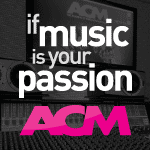Personalised Guitar Tones Tutorial
The hit song is written, the killer vocalist is in place – now all that’s left is to create a truly distinctive guitar sound you can call your own. Rik Flynn explores your options.
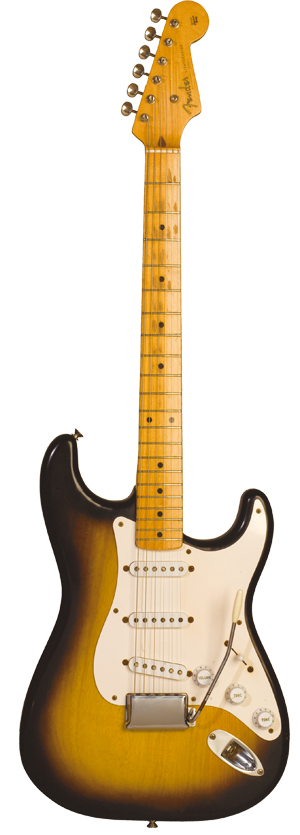

Outside The Box
Whatever your chosen genre, creating a tone that’s yours and yours alone isn’t about following the rules. Some of the most recognisable guitarists stray far from what the guitar faithful would consider ‘great tone’. Take, for example, the wild flailing scream of the Pixies’ Joey Santiago’s Gibson Les Paul, the discordant fuzz of Sonic Youth’s dual Fender attack, or the immense wall of sound that emanated from My Bloody Valentine. None of these followed the rulebook. If anything, they threw it straight out of the window.
Consider one of the first recorded uses of distortion – 1951’s Rocket 88. Willie Kizart achieved his ground-breaking sound with a broken amp he’d tried to fix by stuffing with newspaper – he liked the sound and had the confidence to keep it. Jonny Greenwood’s rhythmic ‘dead notes’ that introduce the chorus of Radiohead’s Creep were the product of his frustration at the song being too quiet but became a defining feature, while The Kinks’ Dave Davies lit the touchpaper for punk with his riff in You Really Got Me by slashing his speaker cone with a razor blade!
While many less destructive techniques will be of great help, it’s worth remembering that true pioneers throw caution to the wind and magic often ensues. As Dimebag once said: “My sound didn’t develop until I started ignoring the recording manual.”
Be Yourself
Armed with a feel-the-fear-and-do-it-anyway approach, examine what kind of player you are; it’s the key to your trademark sound. Most memorable guitarists rely as much (if not more) on their playing style to separate themselves from the pack as they do their gear. Spend some time developing the parts of your style that feel exciting and fresh to you. Do this and you‘re onto a winner before you’ve even plugged in.
Whether the devil played his part at the crossroads or not, bluesman Robert Johnson left an imprint on blues that still resonates today with nothing more than his fingers and an acoustic; Kurt Cobain wasn’t the most proficient of players, but the world felt his passion in those raw barre chords and trademark chord progressions; Hendrix tops most ‘Best Guitarist’ lists not because of equipment, but thanks to his awe-inspiring ability to express himself. “Be yourself,” said Joey Santiago, when asked what advice he’d give to young guitarists. And believe us, it’s the most important piece of advice anyone could ever give you.
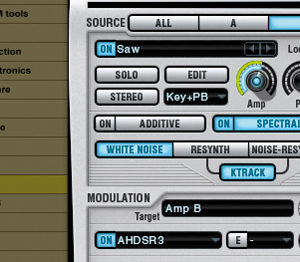

Two classic vintage amps (above) favoured by top producer Dimitri Tilkovol: Jack White uses as Silvertone (left) and U2’s The Edge prefers the Vox AC30
Know Your Gear
Before thinking about spending loads of hard-earned cash on new gear, take stock: you may already have what you’re looking for. Many class acts manage to achieve their trademark sounds with minimal kit. If you’re looking for something more extreme from your sound, fine, but a firm foundation is essential. Between you, your guitar and your amp(s), you can shape your sound dramatically.
Truly creative players experiment until they’ve exhausted every avenue available to them, and whether you’re using hardware or software, be sure to read the manuals. If you know your gear inside out, you’ll get the most out of it and trust your instincts. Santiago created the bulk of his sounds simply by changing between pickups and riding the volume control on his guitar. Even Joe Satriani, famous for his space-age sound, returned to a simple setup for Chickenfoot’s IV album using little more than a modified Marshall JVM410: “Four channels, three modes for each channel,” he said. “There are a million sounds in there!”
Kevin Shields famously took sonic perfection to a new level when masterminding MBV’s ground-breaking sound, taking two years to record their landmark Loveless. “There’s a rhythm in the distortion,” he said in a rare interview. “I had a total obsession with that. I was hunting for sounds so that every time you played these chords they would have these ripples.” Check out To Here Knows When for the considerable fruits of this obsession.
Many assume that huge amounts of effects and layered guitars were behind Shields’ colossal sound. This is not the case: “It’s really super-basic,” he explained. “It all had to do with the way I played guitar.” Shields used “simple minimal effects”, preferring to be creative with amplifiers, preamps, EQs and his guitar. Limit yourself to a few favourite pieces of kit and use your creativity rather than muddying your tone with anything and everything – it may take longer to find the nuances you’re looking for, but will ultimately pay off. Much like Shadows guitarist Hank Marvin, who used the tremolo arm to stunning effect in the 50s, Shields made it his own too. His ‘glide guitar’ technique – wavering the tuning momentarily – was integral to his sound. “I never really learned how to play a scale, but still wanted to be expressive,” he explained. “That made me use the tremolo arm, which gave me something to work with for a long time.”
Make sure that you keep a record of your travails, too; pioneering guitarist Tom Morello carries a notebook to keep track of his creations. If you’re using software, stay away from presets; scroll-down menus are accessible to everyone who bought the software! If you build your own sounds by altering the parameters in your own way you may strike gold, but ensure that you save your customised settings!
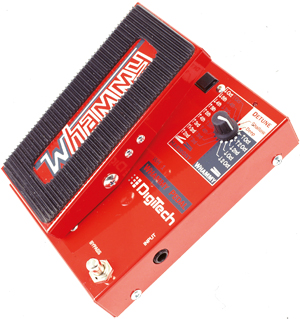
Focusing on one pedal can really personalise your tone. Dimebag Darrell, Johnny Greenwood and Tom Morello chose the Digitech Whammy
Core Issues
While your choice of guitar makes a clear difference to your tone, your choice of amp (and cabinet, if you’re using one) will often have more impact on the end result. “A good amp is almost more important to me than the guitar,” says top producer Dimitri Tikovoi (Placebo, Goldfrapp). “A great guitar is very important for the player so they get a vibe from it, but without a good amp it won’t sound good. An average guitar and a great amp has got more to offer in terms of sound.”
Tikovoi’s collection includes a mixture of vintage, classic Marshall heads and boutique amps. His recording technique involves blending various amps and software together. “At the moment I have a Silvertone amp that I use a lot. It’s got a really good White Stripes kind of sound. But in my list of favourite amps would be the Vox AC30, Fender Twin Reverb, Marshall JCM800 and 900, Fender Blues Deluxe and occasionally a Soldano or Matchless. Depending on the style I use a combination of two amps, like an AC30 and Twin, or sometimes a blend of amps and software, like Guitar Rig. Guitar Rig is great if you don’t track lots of guitars. If you use it for a lead line and you’ve recorded the rhythm guitars with an amp it can be really good.”
While often unbeatable in terms of sound, vintage amps can be expensive and unreliable. But fear not, most of the big players – Fender, Vox, Orange, Laney, Marshall and others – offer newer takes on the classics that are well worth a look. There are many vintage-style ‘boutique’ amps that will do the job, too – try Matchless, Bad Cat, Bognor, 65 Amps or Two Rock.
‘Classic’ amps can be used in different ways to achieve very different results. Fender’s Twin Reverb was adopted by surf guitarists in the 50s, often paired with the newly released Fender Stratocaster for that reverb-laden twang, yet its bell-like tone was also used in an entirely different way by Johnny Marr of The Smiths. With a Rickenbacker guitar, famous for its sparkling top end, and his signature arpeggios, Marr achieved a fuller tone that still cut through the band.
For those who want to declare war on their audience, the high-gain amp options are far and wide. Of course, Marshall has some classic stacks and the smooth, powerful distortion that makes up the ‘Marshall sound’ is a popular one, but there are many others like Blackstar, Randall, Engl, Soldano and Orange that also offer excellent high-gain options. Again, used in different ways they can react completely differently. Zakk Wylde’s chunky metal riffing and Joe Bonamassa’s blues-rock stylings both mostly emanate from the same duo – a Gibson Les Paul through a Marshall. It’s pickup choice, playing style and amp settings that make all the difference; Wylde chooses active metal-friendly EMG pickups and various techniques, from tapping to false harmonics, while Bonamassa favours warm, vintage PAF humbuckers and immaculate feel for his magic. Same guitar, same amp-style… completely different approach.
Of course, we don’t all have a huge collections of amps, but software like Guitar Rig 4, IK Multimedia’s AmpliTube 3, Line 6 POD Farm and Waves GTR enable you to audition sounds to your heart’s content – all have very good versions of the classics. If you want to stick to hardware, it’s a good way to get a ball-park idea before you buy.

The classic Gibson Les Paul 1959
Stomp Box
There is an abundance of weird-and-wonderful effects out there and to go into these in-depth here would be impossible (suffice it to say that when it comes to effects you have to weigh up what’s important to you). Whether it’s a vintage analogue rarity or digital multi-effects box – software or hardware – you’re after character, and if it’s on the money for your requirements, stick with it. As Dave Hunter says in the Tone Manual: “As long as what comes out the other side of the box is acceptable, sonically… and does the tone tricks you’re looking for – and resists depleting your dry guitar signal when switched off – there is little to object to.”
Don’t forget that new technology often shapes much of the most ground-breaking music in history. The Ventures’ 1962 single 2000 Pound Bee stirred things with the brand- new Gibson Maestro Fuzz pedal; Hendrix overdubbed guitars in Purple Haze and Fire through FX guru Roger Mayer’s revolutionary Octavia pedal (it enabled Jimi to play notes that weren’t achievable with a guitar alone) and, more recently, Muse’s Matt Bellamy pushed things forward with an X/Y MIDI controller pad (like the Kaoss Pad) installed in his M1D1 guitar with which he controls the parameters of his effects.
While many of the faithful will tell you to steer clear of digital gear in favour of analogue, Kevin Shields ignored the warnings and used an Alesis MidiVerb II for his trademark ‘reverse-reverb’ effect – a defining trick in his arsenal.
Often focusing on one pedal and really exploring its capabilities works like a charm. Irish blues-rock guitarist Rory Gallagher was an exceptional technician, but the small nondescript treble booster that sat at his feet helped his guitar truly sing. Being bold works wonders, too. “Subtlety isn’t so high on my list,” joked Morello. “When you first go into a guitar store and you try a delay pedal, you turn all the knobs up and it sounds crazy. Then, when you’re in a band, you’ve got to ratchet everything back. I kept my mindset with the first trip to the guitar store!”
Morello took advantage of the DigiTech Whammy’s otherworldy harmonising and octave-jumping sounds, paired with a simple killswitch on his guitar that allowed him to cut the signal at whim. “It changed the way I looked at music,” he enthused. “I started studying DJs rather than guitar players and tried to emulate those sounds.” Jonny Greenwood also put the Whammy to great use on OK Computer, as did Dimebag Darrell, who created his ‘fry sound’ by splitting his lead guitar into two; one without effects, one doubling it with the Whammy and both going through a tiny 10W Marshall head.
Exploration reaped rewards for Dimebag when he stumbled on a sound purely by standing next to his drummer brother: “I was moving my volume knob to see how far I could go before the guitar started feeding back,” he told Guitar World. “I had my guitar running through an MXR flanger. By chance, the pickup started picking up Vinnie’s snare and it popped the gate. So the drum is triggering the guitar.”
Kevin Shields also explored the possibilities of feedback by recording it and manipulating the samples. “We learnt from guitar feedback,” he states. ”With lots of distortion you can make any instrument.”
An effective alternative to traditional pedals and DAW-based effects software is DigiTech’s new iStomp unit, which enables you to upload effects via an iPhone, iPad or iPod Touch. TC Electronic’s TonePrint technology works in a similar way, but in this case players can download effects customised by some of the world’s best guitarists. Lastly, try seeking out old pedals that have slipped off the radar. Many guitarists achieve their novel sounds merely by using a stompbox that no one else has! Once you’ve finally settled on your favoured few, try mixing up the order of the pedals in the chain – it will often have a dramatic effect on your sound.
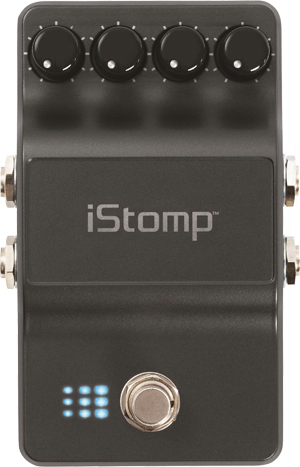
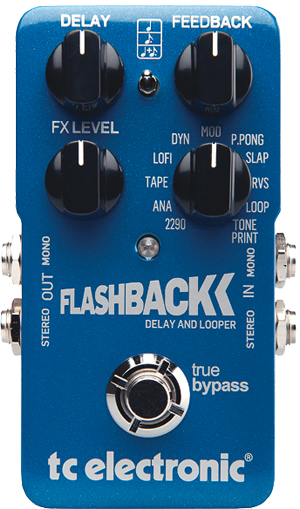
Digitech’s iStomp and TC Electronic’s new TonePrint pedals offer an innovative way to audition sounds quickly and easily
Back To You
Theorising such a subjective concept as individuality is something of a paradoxical pursuit and regardless of which guitar is hanging around your shoulders, which amp you’ve fired up and which effects boxes are at your feet, your signature tone will only ever come from you. However, achieving a signature tone is a task that requires enterprise, dedication, trial and error and – last but never least – a little bit of luck. But one thing’s for sure: you’ll have a great deal of fun uncovering yours.
